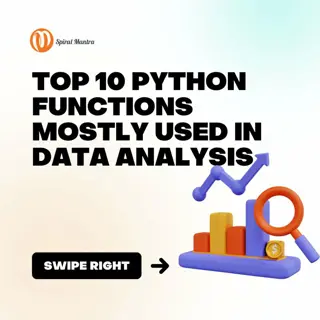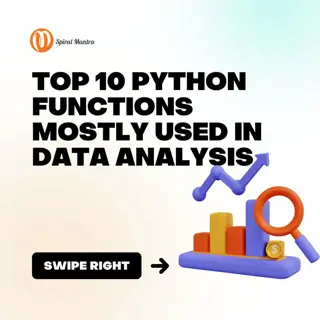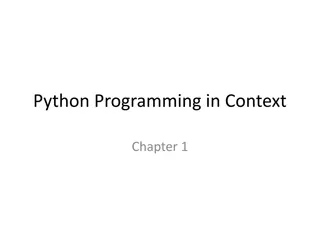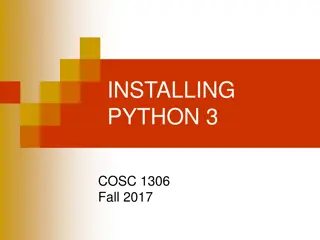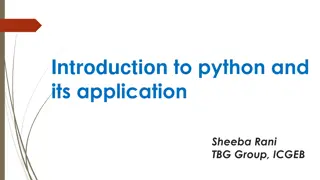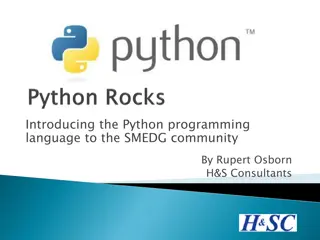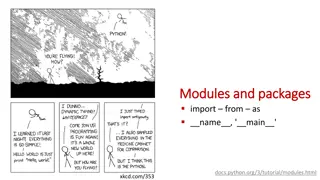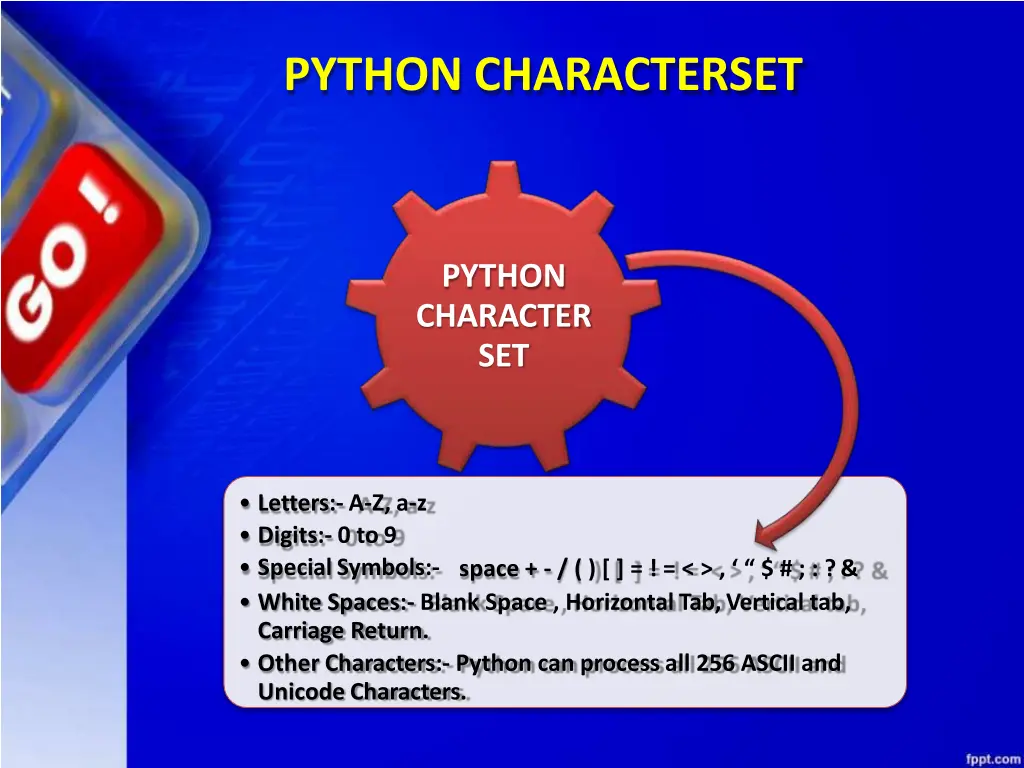
Understanding Python's Character Set and Token Lexical Units
Learn about the character set used by Python, including letters, digits, special symbols, whitespace, and other characters. Explore the concepts of tokens, lexical units, keywords, identifiers, literals, and naming conventions in Python programming.
Download Presentation

Please find below an Image/Link to download the presentation.
The content on the website is provided AS IS for your information and personal use only. It may not be sold, licensed, or shared on other websites without obtaining consent from the author. If you encounter any issues during the download, it is possible that the publisher has removed the file from their server.
You are allowed to download the files provided on this website for personal or commercial use, subject to the condition that they are used lawfully. All files are the property of their respective owners.
The content on the website is provided AS IS for your information and personal use only. It may not be sold, licensed, or shared on other websites without obtaining consent from the author.
E N D
Presentation Transcript
PYTHON CHARACTERSET PYTHON CHARACTER SET Letters:-A-Z, a-z Digits:- 0 to9 SpecialSymbols:- space + - / ( ) [ ] = ! = < > , $ # ; : ?& White Spaces:- Blank Space , Horizontal Tab, Vertical tab, Carriage Return. Other Characters:- Python can process all 256 ASCII and UnicodeCharacters.
TOKENS / LEXICAL UNITS 1. Key Words 5. 2. Punctuators Identifiers TOKENS 4. 3.Literals Operators.
1. Keyword/ReservedWord What is Keyword? Keywords are also called as reserved words these are having special meaning in python language. The words defined in the python interpreter hence these cant be used as programming identifiers. are
Some Keywords of Python Language and break continue del else exec for assert class def elif except finally from
2. IDENTIFIERS What is an identifier? A Python Identifier is a name given to a function, class, variable, module, or other objects that you ll be using in your Python program. In short, its a name appeared in the program. For example: a, b, c a b and c are the identifiers and a b & c and , are thetokens
PYTHON NAMING CONVENTIONS SOME VALIDIDENTIFIERS: Myfile1 y3m9d3 MYFILE SOME INVALIDIDENTIFIERS: MY-REC elif DATE9_7_8 _xs _FXd 28dre false break del
3. LITERALS / CONSTANTVALUES What is literals? Literals are also called as constants or constant values these are the values which never change execution of program. during the
TYPES OF LITERALS / CONSTANT VALUES What are the types of literals? 1) 2) 3) 4) 5) String Literals orConstants. Numeric Literals or Constants. Boolean Literals or Constants. Special Literal None. Literal Collections.
2. NUMERICAL LITERALS Numerical Literals have the following types: int or integers float - real values - Complex numbers - Whole numbers Complex
3) BOOLEAN LITERALS OR CONSTANTS. A Boolean literal in python is used to represent the Boolean values (true or false).
PUNCTUATORS Punctuators are also called as separators The Followings are used as punctuators: Brackets Parentheses Braces Comma Semicolon Colon Asterisk Ellipsis Equal Sign Pound Sign # [ ( { , ; : * = ] ) }
COMMENTS Comments are non executable statements in a program. Single line comment always starts with # Multiline comment will be in triple quotes. For example write a program to find the simple interest . Note: Triple apostrophe is called docstrings.
STATEMENTS In computer terminology statement refers to an instruction. Program statements. A collection of statements makes program contains several Another name for a program is code.
FUNCTIONS What is function? Function is a self contained program segment which carries out some specific well defined task. For Example: def sqr( num ): result= num *num print ("Square = " , result) sqr()
VARIABLES AND ASSIGNMENTS Named labels are calledvariables. For example: marks =86 78 79 80 81 82 83 84 85 86 87 2000 2016 2018 2026 2032 2044 2048 2050 2054 2068 marks refersto location 2054
INPUT ( ) FUNCTION For Example: p = input( Enter the value ) x = int(input( Enter x value )) reads the value and converts it in to integer type data or value. y=float(input( Enter y value )) reads the value and converts it in to float type data or value.

